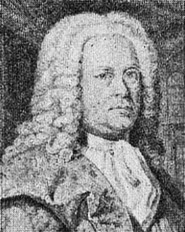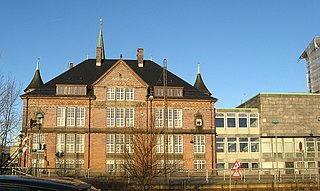Related Research Articles

Ole Christensen Rømer was a Danish astronomer who, in 1676, made the first measurement of the speed of light.

1644 (MDCXLIV) was a leap year starting on Friday of the Gregorian calendar and a leap year starting on Monday of the Julian calendar, the 1644th year of the Common Era (CE) and Anno Domini (AD) designations, the 644th year of the 2nd millennium, the 44th year of the 17th century, and the 5th year of the 1640s decade. As of the start of 1644, the Gregorian calendar was 10 days ahead of the Julian calendar, which remained in localized use until 1923.

Armand Hippolyte Louis Fizeau FRS FRSE MIF was a French physicist, who in 1849 measured the speed of light to within 5% accuracy. In 1851, he measured the speed of light in moving water in an experiment known as the Fizeau experiment.

Jan Baptist van Helmont was a chemist, physiologist, and physician from Brussels. He worked during the years just after Paracelsus and the rise of iatrochemistry, and is sometimes considered to be "the founder of pneumatic chemistry". Van Helmont is remembered today largely for his 5-year willow tree experiment, his introduction of the word "gas" into the vocabulary of science, and his ideas on spontaneous generation.
The year 1868 in science and technology involved some significant events, listed below.
The year 1748 in science and technology involved some significant events.
The year 1710 in science and technology involved some significant events.
The year 1676 in science and technology involved some significant events.
The year 1648 in science and technology involved some significant events.
The year 1580 in science and technology included many events, some of which are listed here.

Peder [Nielsen] Horrebow (Horrebov) was a Danish astronomer. Born in Løgstør, Jutland to a poor family of fishermen, Horrebow entered the University of Copenhagen in 1703. He worked his way through grammar school and university by virtue of his technical knowledge: he repaired mechanical and musical instruments and cut seals. He received his MA from the university in 1716, and his MD in 1725. From 1703 to 1707, he served as an assistant to Ole Rømer and lived in Rømer's home. He worked as a household tutor from 1707 to 1711 to a Danish baron, and entered the governmental bureaucracy as an excise writer in 1711.
This article discusses women who have made an important contribution to the field of physics.

Rømer's determination of the speed of light was the demonstration in 1676 that light has an apprehensible, measurable speed and so does not travel instantaneously. The discovery is usually attributed to Danish astronomer Ole Rømer, who was working at the Royal Observatory in Paris at the time.
The year 1579 in science and technology included a number of events, some of which are listed here.
Events from the year 1710 in Denmark.

Aarhus Katedralskole is a cathedral school, an institution of secondary education, a Danish Gymnasium and a listed building in Aarhus, Denmark. The school is situated in the neighborhood Midtbyen, in the Latin Quarter, bounded by the streets Mejlgade, Kystvejen and Skolegyde. Aarhus Katedralskole offers the 3 year Matriculation examination (STX) programme with elective subjects in the natural sciences, social sciences and arts. The school is an independent self-owning institution financed by the Danish state with about 800 students divided across 30 classes.
Science Museums, Aarhus, founded 1 January 2008, is an umbrella organization comprising the Steno Museum, the greenhouses at Aarhus Botanical Gardens, the Ole Rømer Observatory and a herbarium in Aarhus, Denmark. The Science Museums works as an independent institution under the Science and Technology department of Aarhus University.

Ole Rømer Observatory is an astronomical observatory and museum, built in 1911 and located in Aarhus, Denmark. It is operated by Aarhus University and functions both as a research and training laboratory for the university Institute for Physics and Astronomy and a museum offering guided tours and lectures. It is named after astronomer Ole Rømer, and the buildings were listed in 2006 as a fine example of Danish art nouveau architecture. The facility also includes a residential house, originally and formerly home to the director of the observatory, today used as a guest house for visiting researchers.
Events from the year 1644 in Denmark.
References
- ↑ Sandifer, C. Edward (2007). How Euler Did It. MAA. p. 205. ISBN 9780883855638.
- ↑ Lehr, André (1991). The Art of the Carillon in the Low Countries. Tielt, Belgium: Lannoo. ISBN 90-209-1917-2.
- 1 2 "Jan Baptista van Helmont - Belgian scientist". Encyclopedia Britannica. Retrieved 3 April 2018.
- ↑ "Ole Rømer - Danish astronomer". Encyclopedia Britannica. Retrieved 3 April 2018.
- ↑ Vaquero, J. M.; Vázquez, M. (2009). The Sun Recorded Through History. Springer Science & Business Media. p. 236. ISBN 9780387927909.